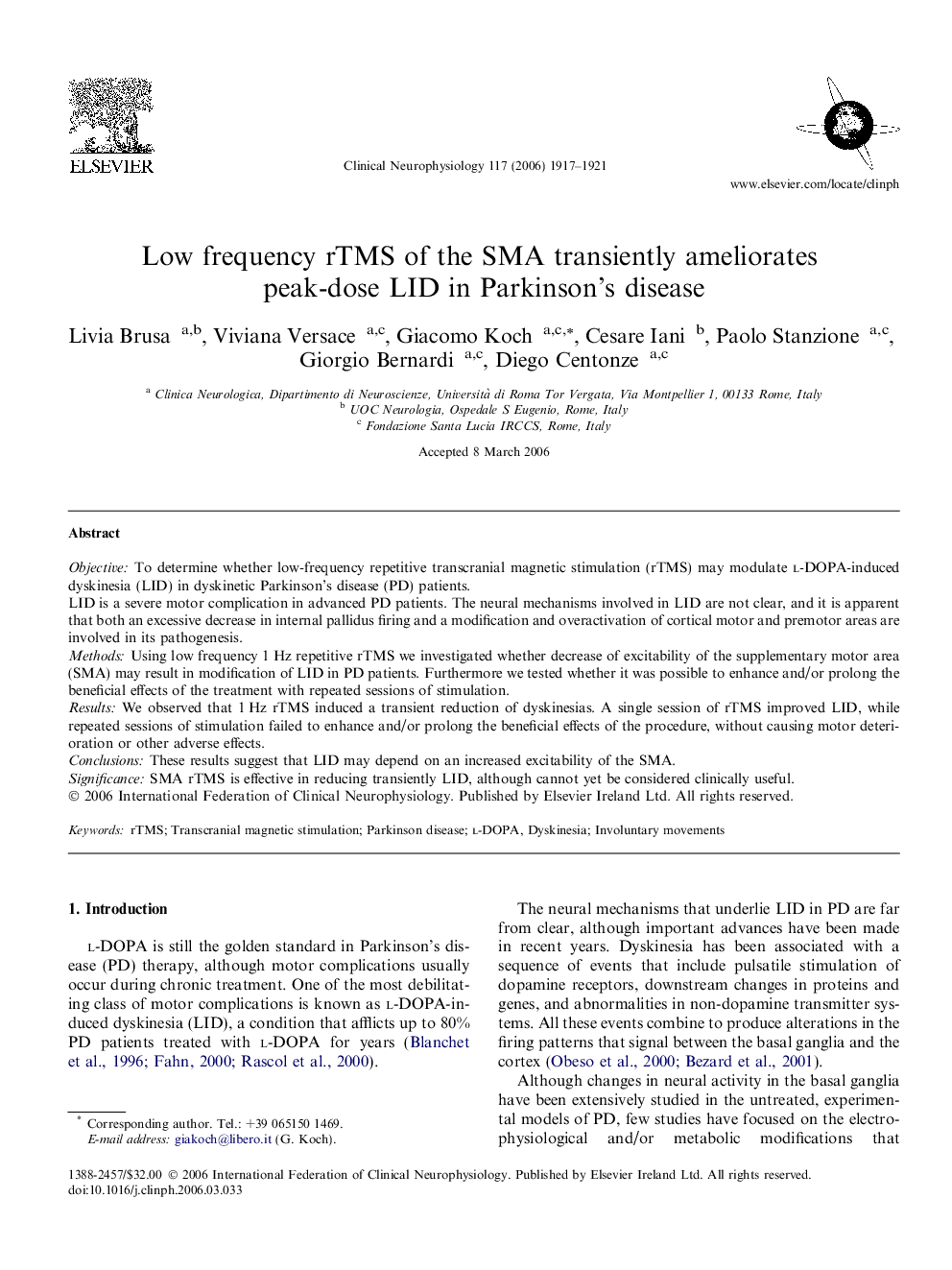| Article ID | Journal | Published Year | Pages | File Type |
|---|---|---|---|---|
| 3047805 | Clinical Neurophysiology | 2006 | 5 Pages |
ObjectiveTo determine whether low-frequency repetitive transcranial magnetic stimulation (rTMS) may modulate l-DOPA-induced dyskinesia (LID) in dyskinetic Parkinson’s disease (PD) patients.LID is a severe motor complication in advanced PD patients. The neural mechanisms involved in LID are not clear, and it is apparent that both an excessive decrease in internal pallidus firing and a modification and overactivation of cortical motor and premotor areas are involved in its pathogenesis.MethodsUsing low frequency 1 Hz repetitive rTMS we investigated whether decrease of excitability of the supplementary motor area (SMA) may result in modification of LID in PD patients. Furthermore we tested whether it was possible to enhance and/or prolong the beneficial effects of the treatment with repeated sessions of stimulation.ResultsWe observed that 1 Hz rTMS induced a transient reduction of dyskinesias. A single session of rTMS improved LID, while repeated sessions of stimulation failed to enhance and/or prolong the beneficial effects of the procedure, without causing motor deterioration or other adverse effects.ConclusionsThese results suggest that LID may depend on an increased excitability of the SMA.SignificanceSMA rTMS is effective in reducing transiently LID, although cannot yet be considered clinically useful.
